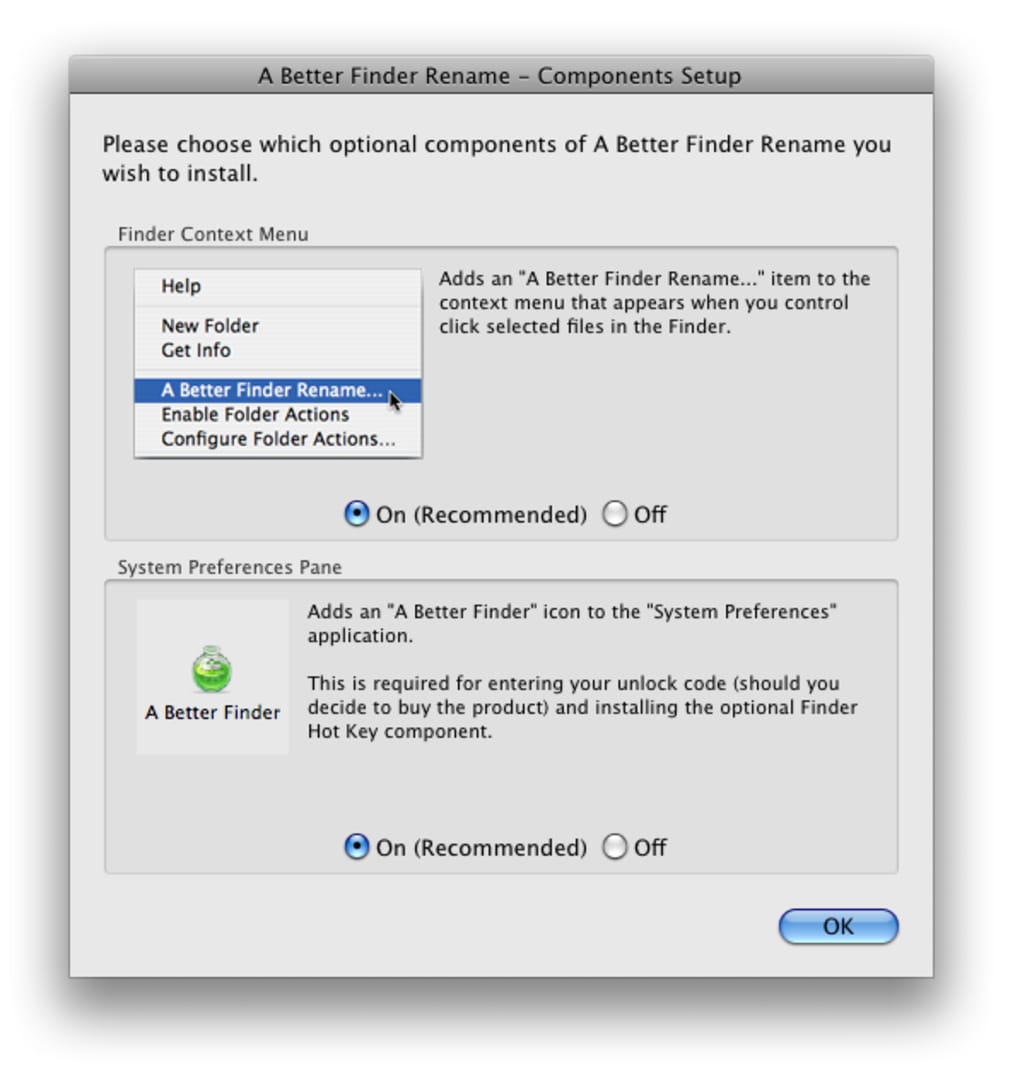

- #A better finder attributes 6 unlock code update
- #A better finder attributes 6 unlock code driver
- #A better finder attributes 6 unlock code windows 10
- #A better finder attributes 6 unlock code code
- #A better finder attributes 6 unlock code windows 8

v5.0 in Windows 2000) is based on the operating system version it should not be confused with the NTFS version number (v3.1 since Windows XP).
#A better finder attributes 6 unlock code windows 8
LFS version 1.1 was replaced by version 2.0 as of Windows 8 to improve performance. Įxpanded the Master File Table (MFT) entries with redundant MFT record number (useful for recovering damaged MFT files)Ĭommonly called NTFS 5.1 after the OS release. Commonly called NTFS 5.0 after the OS release.
#A better finder attributes 6 unlock code update
Ĭompressed files, named streams, and access control lists Ĭommonly called NTFS 4.0 after the OS releaseĭisk quotas, file-level encryption in a form of Encrypting File System, sparse files, reparse points, update sequence number (USN) journaling, distributed link tracking, the $Extend folder and its filesĬompatibility was also made available for Windows NT 4.0 with the Service Pack 4 update.

NTFS 1.0 is incompatible with 1.1 and newer: volumes written by Windows NT 3.5x cannot be read by Windows NT 3.1 until an update (available on the NT 3.5x installation media) is installed. Microsoft has released five versions of NTFS: Algorithms identifying the file system in a partition type 07 must perform additional checks to distinguish between HPFS and NTFS. For example, FAT has more than nine (one each for FAT12, FAT16, FAT32, etc.).
#A better finder attributes 6 unlock code code
Using the same Partition ID Record Number is highly unusual, since there were dozens of unused code numbers available, and other major file systems have their own codes. Probably as a result of this common ancestry, HPFS and NTFS use the same disk partition identification type code (07). The original NTFS developers were Tom Miller, Gary Kimura, Brian Andrew, and David Goebel. When Microsoft created their new operating system, they "borrowed" many of these concepts for NTFS. The HPFS file system for OS/2 contained several important new features. Because Microsoft disagreed with IBM on many important issues, they eventually separated OS/2 remained an IBM project and Microsoft worked to develop Windows NT and NTFS. In the mid-1980s, Microsoft and IBM formed a joint project to create the next generation of graphical operating system the result was OS/2 and HPFS. NTFS also supports shadow copy to allow backups of a system while it is running, but the functionality of the shadow copies varies between different versions of Windows. Unlike FAT and High Performance File System (HPFS), NTFS supports access control lists (ACLs), filesystem encryption, transparent compression, sparse files and file system journaling. NTFS uses several files typically hidden from the user to store metadata about other files stored on the drive which can help improve speed and performance when reading data. By using the convert command, Windows can convert FAT32/16/12 into NTFS without the need to rewrite all files.
#A better finder attributes 6 unlock code driver
NTFS reading and writing support is provided using a free and open-source kernel implementation known as NTFS3 in Linux and the NTFS-3G driver in BSD. It superseded File Allocation Table (FAT) as the preferred filesystem on Windows and is supported in Linux and BSD as well. Starting with Windows NT 3.1, it is the default file system of the Windows NT family. New Technology File System ( NTFS) is a proprietary journaling file system developed by Microsoft. Linux kernel versions 2.2-2.4 (read-only) Read-only, hidden, system, archive, not content indexed, off-line, temporary, compressed, encryptedĪES (Windows XP Service Pack 1, Windows Server 2003 onward) Yes (see § Alternate data stream (ADS) below)
#A better finder attributes 6 unlock code windows 10
July 1993 29 years ago ( 1993-07) with Windows NT 3.1ĮBD0A0A2-B9E5-4433-87C0-68B6B72699C7 ( GPT)Ģ56 TB − 64 KB ( Windows 10 version 1703, Windows Server 2016 or earlier implementation) Ĩ PB − 2 MB (Windows 10 version 1709, Windows Server 2019 or later implementation) ġ6 TB − 64 KB ( Windows 7, Windows Server 2008 R2 or earlier implementation) Ģ56 TB − 64 KB ( Windows 8, Windows Server 2012 or later implementation) Ĩ PB − 2 MB (Windows 10 version 1709, Windows Server 2019 or later implementation) Proprietary file system developed by Microsoft New Technology File System Developer(s)


 0 kommentar(er)
0 kommentar(er)
